Related Research Articles
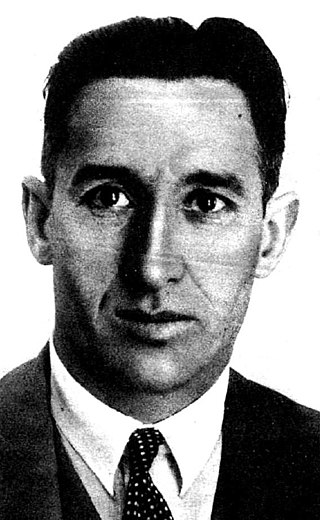
Ángel Pestaña Nuñez (1886–1937) was a Spanish anarcho-syndicalist general secretary of the Confederación Nacional del Trabajo (CNT), founder of the Syndicalist Party and member of the Cortes Generales.

Joan Peiró i Belis was a Catalan anarchist activist, writer, editor of the anarchist newspaper Solidaridad Obrera, two-time General Secretary of the Confederación Nacional del Trabajo and Minister of Industry of the Spanish government during the Spanish Civil War.
Los Solidarios was a Spanish anarchist militant group, established in 1922 to combat the rise of pistolerismo and yellow syndicalism. At first, the group organised the Catalan anarchist movement, stockpiled weapons and infiltrated the Spanish Armed Forces. Following the assassination of CNT leader Salvador Seguí by pistoleros, the group initiated a campaign of targeted assassinations against reactionary officials who they held responsible for state terrorism. In 1923, Los Solidarios assassinated pistolero leader Ramón Laguía, the former governor of Biscay Fernando González Regueral, and the Archbishop of Zaragoza Juan Soldevila. As news began to spread of an impending military coup in the country, Los Solidarios sought to acquire weapons in order to resist the coup. The group robbed a branch of the bank of Spain in Xixón and used the money to buy rifles. However, they were ultimately unable to stop the 1923 Spanish coup d'état, which resulted in the establishment of the Dictatorship of Primo de Rivera.

The Canadenca strike was a historic strike action in Barcelona, Catalonia, Spain, that was initiated in February 1919 by the Confederación Nacional del Trabajo (CNT) and lasted over 44 days evolving into a general strike paralyzing much of the industry of Catalonia. Among its consequences was to force the Spanish government to issue the Decreto de la jornada de ocho horas de trabajo, the first law limiting the working day to eight hours. The strike originated at the principal electricity company in Barcelona, Riegos y Fuerzas del Ebro, a subsidiary of Barcelona Traction, popularly known as la Canadenca because its major shareholder was the Canadian Bank of Commerce of Toronto.
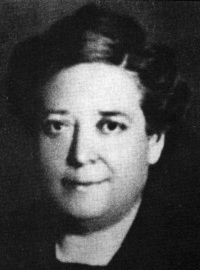
Teresa Claramunt i Creus (1862–1931) was a Catalan anarcho-syndicalist. Claramunt lived in a time marked by a labour movement in formation and by rising anarchist sentiments. A pioneer of anarcha-feminism, she was one of the first to propose the formation of an autonomous organization of anarchist women, a legacy that a few years after her death would be picked up by the Mujeres Libres organization.

Teresa Mañé i Miravet (1865–1939), also known by her pen name Soledad Gustavo, was a Catalan teacher, editor and writer. As a proponent of progressive education, Mañé founded some of the first secular schools in Catalonia. With her husband Joan Montseny, she edited the magazine La Revista Blanca, in which she elaborated her ideas on anarchism, feminism and pedagogy. Her daughter Frederica Montseny i Mañé went on to become a leading figure in the Spanish anarchist movement and the Minister of Health of the Second Spanish Republic.

Lola (Dolores) Iturbe was a prominent Spanish anarcho-syndicalist, trade unionist, activist, and journalist during the Second Spanish Republic, and a member of the French Resistance during the Battle of France. She co-founded the anarcho-feminist movement, Mujeres Libres, and of the Comité de Milicias Antifascistas during the Spanish Civil War.
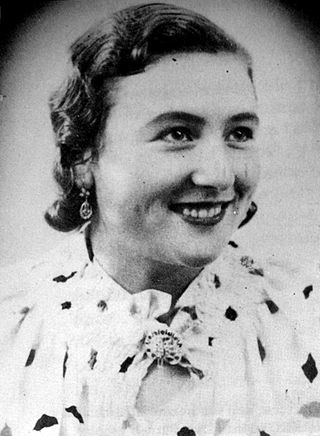
Sara Berenguer Laosa (1919–2010) was a Catalan anarcho-syndicalist and anarcha-feminist writer, who was active in the Mujeres Libres movement.

Pepita Laguarda Batet (1919–1936), was a Catalan anarchist militiawoman who fought on the Aragon front during the Spanish Civil War. She was incorporated into the libertarian ranks without having yet reached adulthood and died in Uesca at the age of seventeen. She was the youngest soldier to die in combat during the war.
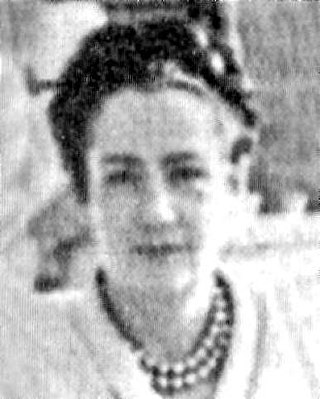
Mercè Comaposada i Guillén was a Catalan pedagogue, lawyer, and anarcho-feminist. With Lucía Sánchez Saornil and Amparo Poch y Gascón, she was the co-founder of the libertarian women's organization, Mujeres Libres.

Joan Montseny i Carret (1864–1942), who also wrote under the pseudonym Federico Urales, was a Catalan anarchist activist and journalist from Spain.
Women in the Federación Anarquista Ibérica were often only addressed because of what they appeared to be able to offer male FAI leadership in terms of attracting adept fighters and politicians.
Women in the Confederación Nacional del Trabajo faced many specific challenges owing to a long history of sex-based discrimination in the Spanish anarcho-syndicalist movement and in the Confederación Nacional del Trabajo (CNT). From early in its history, there was a belief that a woman's primary role was to reproduce and that only men should be in the workforce. Few women were involved in the early efforts inside Spain, and internationally there were active attempts to keep women out. The formal creation of the CNT in 1910 did little to change this. Anarchist men inside the CNT actively tried to keep women out to avoid diminishing their own importance.

Ricardo Sanz García (1898–1986) was a Valencian anarchist militant. A member of Buenaventura Durruti's insurgent group Los Solidarios, Sanz participated in the anarchist armed struggle against the Spanish monarchy and the dictatorship of Primo de Rivera. Following the proclamation of the Second Spanish Republic, he became a leader of the Confederación Nacional del Trabajo (CNT) and Federación Anarquista Ibérica (FAI) in Catalonia. During the Spanish Civil War, Sanz oversaw the training of the confederal militias and went on to lead the Durruti Column following the death of its namesake. In command of the Aragon front, he attempted multiple unsuccessful offensives against Zaragoza, but was either hampered by severe weather or held back by the Ministry of Defence. After the militarisation of the Column, he continued to command it as the reorganised 26th Division, but came into conflict with Communist-aligned commanders of the Spanish Republican Army. After the Nationalist victory in the Aragon Offensive, Sanz fled to France, where he remained for the rest of his life.

Josep Negre i Oliveras was a Valencian anarcho-syndicalist leader.
Ramona Berni i Toldrà was a Spanish anarcho-syndicalist militant from Catalonia.
Rosario DolcetMartí was a Spanish anarcho-syndicalist militant, exiled by the Francoist dictatorship.
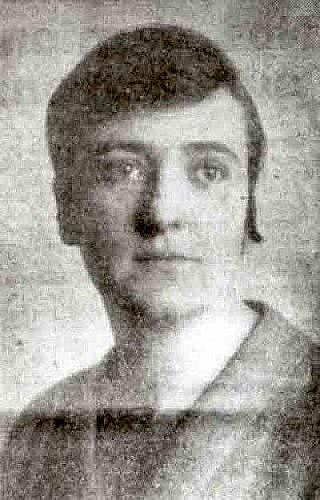
Émilienne Léontine Morin was a French anarcho-syndicalist, shorthand typist and partner of Buenaventura Durruti. In 1936, she was part of the Durruti column, an anarchist military unit, during the Spanish Civil War. She was nicknamed "Mimi-FAI" after the Federación Anarquista Ibérica (FAI).

Margarida Gironella (1886–1964) was a Catalan anarchist. She was a founding member of the Confederación Nacional del Trabajo (CNT), and a militant of that same union before and during the Spanish Civil War. Her partner, Eusebi Carbó i Carbó, was also a recognized anarchist of the period.
Gregorio Suberviola Baigorri (1896–1924) was a Navarrese anarchist militant.
References
- 1 2 Íñiguez, Miguel (2001). "Not, Pepita". Esbozo de una enciclopedia histórica del anarquismo español (in Spanish). Madrid: Fundación de Estudios Libertarios Anselmo Lorenzo. p. 436. ISBN 9788486864453. OCLC 807322760.
- 1 2 3 García Francés, Kike (June 2017). "Justicieras, Solidarias y Nosotras: Las mujeres en los grupos de acción anarquistas". Rojo y Negro (in Spanish). No. 313. ISSN 1138-1019.
- ↑ R.D. (16 July 2012). "NOT, Josefa "PEPITA"". Dictionnaire international des militants anarchistes (in French). Retrieved 15 October 2022.